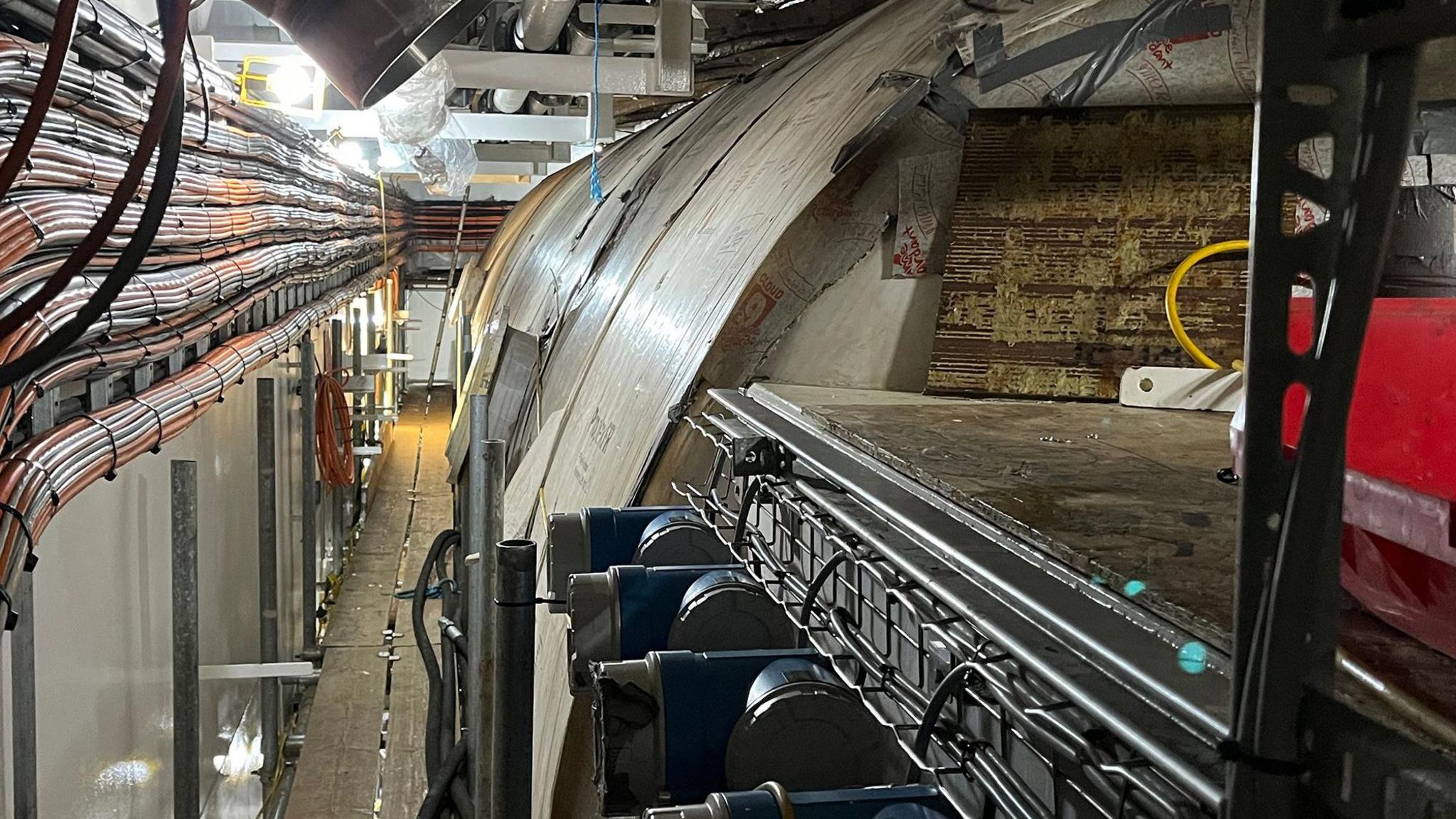News EventMonday, December 30, 2024 @ 0700 |
GLEN SANNOX (2024- Ro-ro ferry 102.4m 336 feet overall of Caledonian MacBrayne, Gourock, Scotland) |
 Own Page Own Page |
||||
'Green' ferry GLEN SANNOX emits more CO2 than old diesel ship CALEDONIAN ISLES ...... PART 2 of 3 |
||||||
|
||||||
|
A second reason is methane. The LNG fuel mostly consists of methane, a greenhouse gas with a global warming potential (GWP) 28 times more potent than CO2 over a 100-year time span. A small proportion of methane always passes through the engines unburnt, and is released up the funnels - something known as "methane slip". CalMac has calculated that methane slip adds the equivalent of more than 1,800 tonnes of CO2 per year. Glen Sannox has a huge cryogenic fuel tank in the centre of the ship which stores the LNG at minus 162C There is also no local supply of LNG in Scotland, so the gas has to be brought up from a terminal in Kent using diesel road tankers. This 445-mile road journey adds the equivalent of 140 tonnes of CO2 per year, compared to 19 tonnes for transporting MGO. Ferries procurement agency CMAL, which owns Glen Sannox and its sister ship Glen Rosa, began proposing LNG as a lower emissions ferry fuel as long ago as 2012. In a statement it said LNG was considered "the best option" at the time, and was always intended as a "transition fuel". A CMAL spokesperson added: "Due to the difference in vessel size, propulsion power and expected sailing time, it is inaccurate to draw direct comparisons between the emissions of older vessels and MV Glen Sannox. "The latter is a much newer vessel which is bigger and more powerful than the former, reflecting increased demand on ferry services." Ferry operator CalMac said passenger and vehicle numbers on the Arran route had increased significantly over the past 30 years. "More power is needed for the size of the vessel that can meet that demand, particularly carrying cars, and it should offer greater resilience against adverse weather," a spokesperson said. "As a first in class vessel, we will learn more and more about MV Glen Sannox and her fuel consumption as we sail her." Would it be better to run the ship on diesel?CalMac's emissions analysis, carried out at the start of the year at the request of Scottish ministers, almost certainly underestimates the ship's carbon footprint. The figures are based on ideal engine running conditions which minimise methane slip - and CalMac acknowledges that in real-life operations, emissions are likely to be higher. The analysis also does not factor in so-called "blowdown" emissions of methane which occur every time the ship switches from LNG to running on MGO. Any methane left in the engine crankcase and fuel lines is automatically flushed into the atmosphere - and CalMac has yet to establish how much will be released. The report also only considers the carbon cost of transporting fuel from the LNG terminal in Kent - no allowance is made for "upstream emissions" involved in extracting the gas in Qatar and transporting it to the UK. CalMac argues this is reasonable as it has no control over where the fuel is sourced. But environmentalists and some academics argue that a fuller "well to wake" comparison of fuels would give a more realistic picture of the climate impacts. "Upstream emissions are really important - especially if you are importing gas from Qatar or the US," said Prof Smith. "The point of whether the upstream should or shouldn't be included is irrelevant – it's rearranging deck chairs on the deck of the Titanic at a point when we should be going to zero emissions." |
||||||
